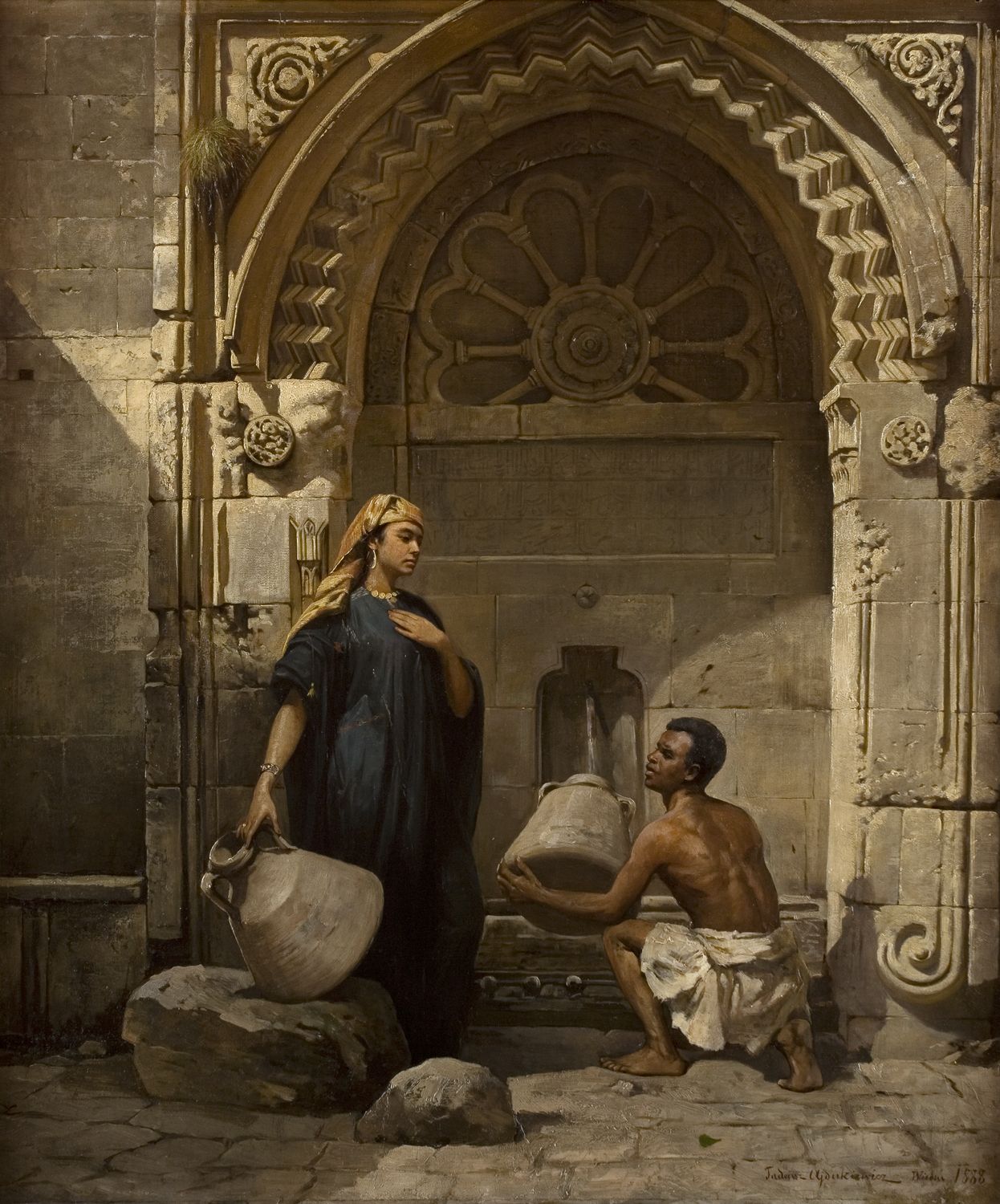31 October 2014
 “At the Well”, Tadeusz Ajdukiewicz, 1888. Oil on canvas, 64 X 55 cm.
“At the Well”, Tadeusz Ajdukiewicz, 1888. Oil on canvas, 64 X 55 cm.
Tadeusz Ajdukiewicz discovered the Orient in 1877, touring Syria, Egypt, Turkey, and the Crimea with Władysław Branicki. This experience made a profound impression on him, and he was to continuously revisit Eastern themes in his works for the rest of his life. At the Well –much like many other Ajdukiewicz pieces with Oriental subjects, including the most famous Prayer in the Desert– was executed during the artist’s sojourn in Vienna, where he had settled in 1882, taking over the studio vacated by Hans Makart and wasting little time in establishing himself with the city’s art-loving public.
A distinguishing trait of this Ajdukiewicz painting, readily apparent from the moment when we first set eyes upon it, is the painstakingly precise rendition of details. The figures featured in the scene have been carefully characterised. The woman is rendered in a majestic pose, with a flagon in her hand; her costume and make-up are depicted in the most minute detail. The young, semi-nude African at her feet is drawing water from the city well, the architectural elements of which are treated with mastery –the rosette set in tracery and the artfully sculpted niche frame. The impression –or, if you will, illusion– of photographic fidelity is enhanced by the artist with details such as the sun-bleached tuft of grass on the wall.
At the Well presents a typical academic studio piece painted in reliance on scenes and objects remembered from Eastern travels and recorded in sketches or photographs. This basic manner of working was followed by many Orientalists, but it was perfected by Jean-Léon Gérôme, whose virtuosity in depicting exotic scenery in all its minutiae was verily hard to match. Gérôme produced many small compositions depicting one or two figures in eastern garb, with decorative portals or niches in the background. Similar themes appear in the works of Stanisław Chlebowski, the Austrian painter Rudolf Ernst (1854-1932), or Ludwig Deutsch (1855-1935), an Austrian settled in France. At the Well is consistent with this set of influences although, at the same time, it is set apart by a certain statuesque quality of the figures.
Beata Studzizba-Kubalska

Over the years of 1864 through 1876, Stanisław Chlebowski served Sultan Abdülaziz in Istanbul as his court painter. As it was, Abdülaziz disposed of considerable artistic talents of his own, and he actively involved himself in Chlebowski’s creative process, suggesting ideas for compositions –such as ballistic pieces praising the victories of Turkish arms.
Tuesday - Saturday 10:00 - 19:00
Friday 10:00 - 22:00
Sunday 12:00 - 18:00
The museum is closed on Mondays.
On Wednesdays, the students can
visit the museum free of admission.
Full ticket: 300 TL
Discounted: 150 TL
Groups: 200 TL (minimum 10 people)